Q4 Market Outlook: Falling rates, cheaper dollar to favour cyclical sectors, gold
Global markets are set to close the year on a cautious yet optimistic note. Despite concerns about economic slowdowns, risk appetite remains strong, supported by favourable financial conditions and sector rotation into energy, mining, and value stocks. Gold has enjoyed a stellar year, driven by geopolitical tensions, rising US debt, and strong central bank demand, while the US dollar weakens, providing a boost to other currencies and geographies. As the U.S. presidential election approaches, uncertainty lingers, but market resilience suggests a potential for continued growth across key sectors. Join the engaging conversation between Swissquote’s Ipek Ozkardeskaya and NFG Partner’s Glenn Coxon about what to expect next quarter!

Global markets are preparing to enter the final quarter of the year with a good dose of dovishness from the global central banks. During the course of the year, the People’s Bank of China (PBoC) introduced several measures to boost growth, the European Central Bank (ECB) cut its policy rates twice, the Bank of England (BoE) cut once and the Federal Reserve (Fed) began easing later than its European peers but with a jumbo rate cut.
More rate cuts are in the store for the year end, but opinions diverge regarding the size and the frequency of the upcoming cuts.
The softening global financial conditions boost risk appetite, however the Fed’s 50bp cut raised questions about the necessity of a move typically associated with panic, crisis or severe meltdown.
Interestingly, and fortunately, the Fed’s aggressive action hasn’t sparked concerns about the health of the US economy, says NFG Partner’s Glenn Coxon. He anticipates that the beginning of a ‘series of rate cuts’ from the Fed, coupled with the exploding US national debt, should help the US economy secure a soft landing.
For the rest of G7, expectations are mixed. The UK has done surprisingly well this year, the Eurozone economies slow down, dragged lower by sputtering Germany. In contrast, the Japanese are relieved to see inflation emerge after decades of fighting deflation, suggesting that the Bank of Japan (BoJ) has likely done enough to normalize its rate policy this year — a view that shifts the Japanese yen outlook from positive to neutral.
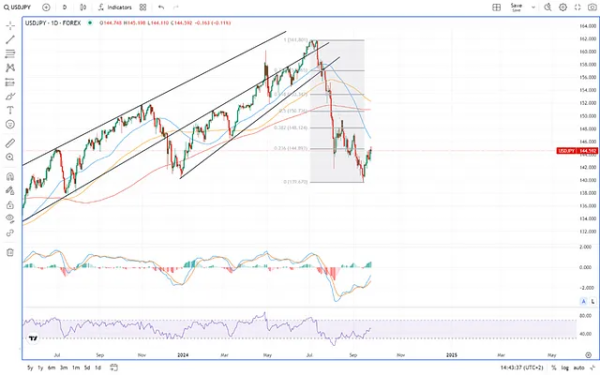
The U.S. dollar has declined by 5% in trade-weighted terms over the past three months and is expected to remain under pressure from the dovish outlook of the Fed and rising US debt, regardless of the outcome of the presidential race in November. However, the greenback is anticipated to find some support at current levels before extending its losses against major currencies.
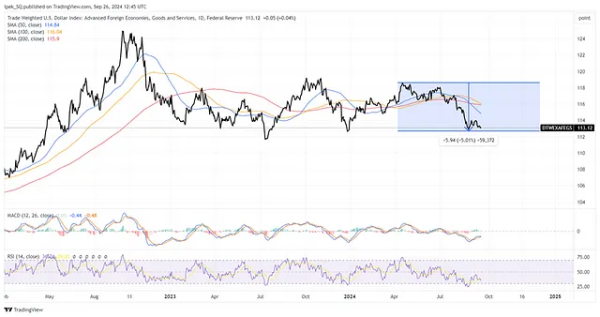
The US dollar weakness could mask the gloomy European fundamentals and give support to the EURUSD around the 1.12 mark, while Cable could extend gains toward the mid-1.30s driven by the diverging outlooks between the Fed and the BoE. The latter will likely take the rate cuts more easy than its peer due to a sticky core and services inflation at home.
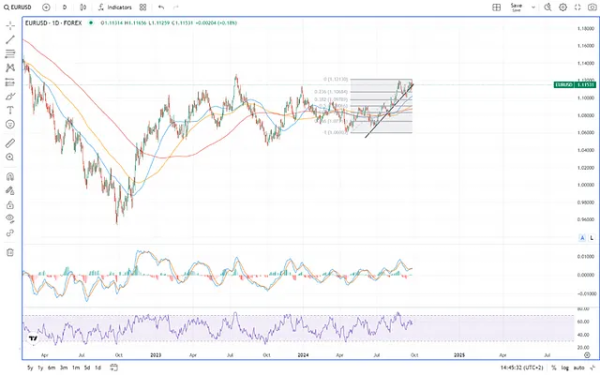
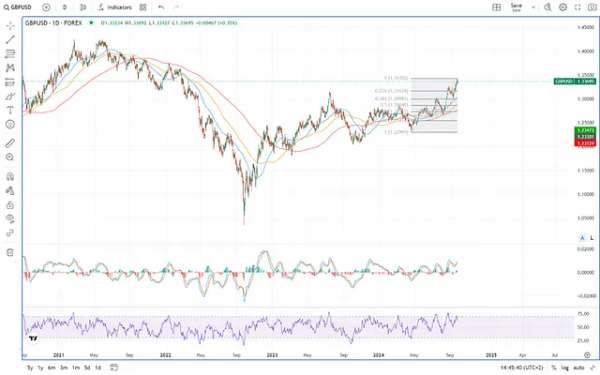
Sofar, gold has had a spectacular year, and its bullish trend will remain intact according to Glenn Coxon, who cites price-supportive factors such as low US yields, the surging US national debt, strong emerging market central bank buying since the start of the war in Ukraine, and the tense geopolitical situation in the Middle East.
If demand for gold from emerging markets joins the party, nothing could justify the end of the upward trend.
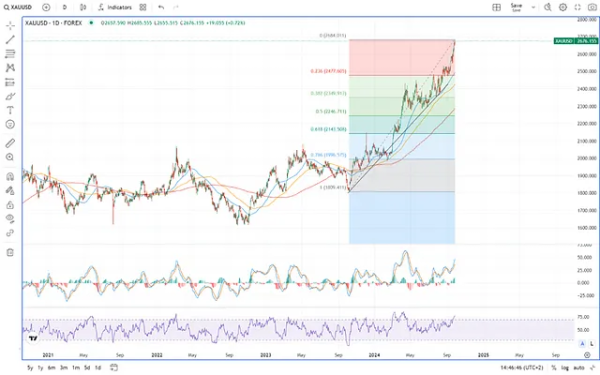
Slowing global growth and difficulties in China weighed on oil and industrial metal prices for most of 2024, but the outlook is about to change. Loosening monetary policies should improve global growth outlook and call for a medium term bullish reversal in oil and copper prices.
Improved price outlook in energy and commodities should, in return, support an increased allocation to energy and mining sectors. Financials should also benefit from the sector rotation.
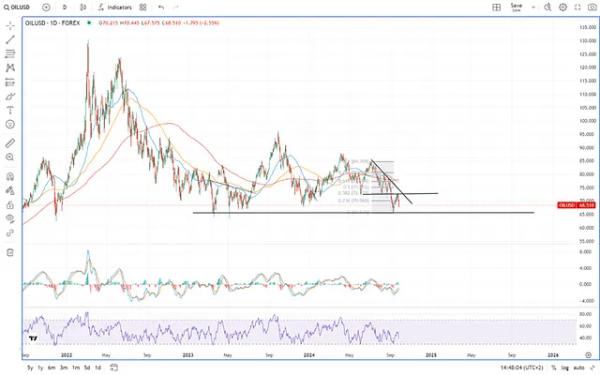
Better value than growth
Lower borrowing costs are expected to give a further support to the US equity markets, and the rally should broaden toward the non-technology, non-AI pockets of the market and toward the rest of the world. The European equities look attractive despite the gloomy economic outlook in the old continent. The cyclical, growth-sensitive character of the European businesses should continue to attract capital and the weaker dollar should support this trend.
The AI fatigue also backs a further sector rotation after such a long run, says Glenn Coxon, who prefers value over growth and favours low beta stocks over high beta peers, especially into the US presidential elections. The outcome of the election is too close to call, and the market environment will be messy. It’s better to curb volatility into a period of uncertainty and have free cash aside for short-term tactical trades depending on the outcome of the November election, he says.
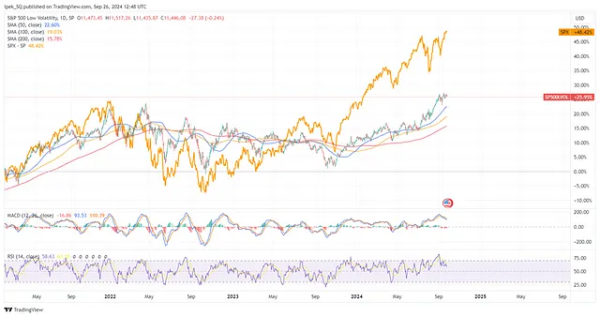
Investors had panicked when Donald Trump became president in 2016, recalls Coxon, but the doom and gloom lasted about two weeks and the US equity markets continued their journey north. It’s likely that the 2024 elections will result in a similar pattern of volatility in the short run, then it will be business as usual.
Everything opposes Donald Trump and Kamala Harris except for their ignorance faced with the exploding national debt. As such, both candidates are bullish for the financial markets.
As a rule of thumb, a Trump win would favour oil and gas companies, small domestic businesses, tech unicorns and cryptocurrencies, whereas a Harris win would benefit ESG, green and sustainable assets and the Big Tech.
China is a trade, not an investment according to Coxon. It is evident that monetary stimulus could hardly make up for China’s structural and balance sheet challenges, its aging population, unsustainable local government debt and the trade tensions. Price rallies in Chines assets should remain short-lived.
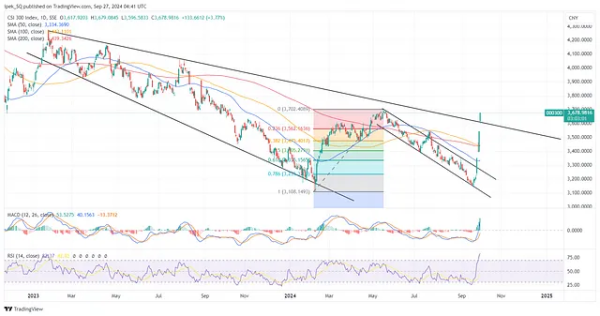
When asked for his top 3 trades for the final quarter of 2024, Glenn Coxon has little hesitation about gold, a preference for S&P’s low volatility segment and uranium. The rising thirst for energy to power our AI ambitions and our climate goals are impossible to match with alternative sources and the mentality regarding nuclear improves by the day.
Coming Soon!
The full conversation will soon be published on our Youtube channel. Stay tuned!
Ipek Ozkardeskaya is a senior market analyst. She has begun her financial career in 2010 in the structured products desk of the Swiss Banque Cantonale Vaudoise. She worked at HSBC Private Bank in Geneva in relation to high and ultra-high net worth clients. In 2012, she started as FX Strategist at Swissquote Bank. She worked as a Senior Market Analyst in London Capital Group in London and in Shanghai. She returned to Swissquote Bank as Senior Analyst in 2020.